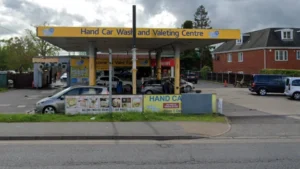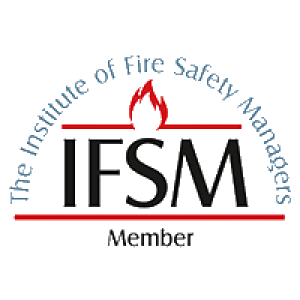Picture this: you’re driving your HGV down the M25 at 2 AM, miles from the nearest services, when you smell something burning.
Your heart rate spikes, and suddenly that fire extinguisher mounted in your cab doesn’t seem like just another bit of required kit – it’s potentially your lifeline.
If you’re in the haulage or road transport business, fire safety isn’t just a tick-box exercise.
It’s about protecting your livelihood, your cargo, and most importantly, your life.
Let’s have a proper chat about fire extinguishers and why getting this right matters more than you might think.
Why Fire Safety Hits Different in Transport
Here’s the thing about trucks and commercial vehicles – they’re basically rolling fire hazards when you think about it.
You’ve got diesel fuel, hydraulic fluids, electrical systems, hot brakes, and often flammable cargo all packed into one vehicle.
Add in long hours, fatigue, and the occasional mechanical failure, and you’ve got a recipe for trouble.
The transport industry sees its fair share of vehicle fires.
Whether it’s an electrical fault sparking up in the dashboard, overheated brakes after a long descent, or a diesel leak hitting something hot, fires can start fast and spread faster.
That’s why having the right extinguisher isn’t just smart – it’s essential.
Know Your Enemy: Types of Fires You’ll Face
Not all fires are the same, and your extinguisher needs to match the threat. In the transport world, you’re mainly looking at:
Class A fires involve ordinary combustibles like paper, cardboard packaging, wooden pallets, or fabric cargo. These are your bread-and-butter fires that water or foam can handle.
Class B fires are your liquid fires – diesel, hydraulic fluid, oil, or any flammable liquids you might be carrying. Water’s actually dangerous here because it can spread the fire.
Class C fires involve electrical equipment. Think dashboard fires, wiring problems, or anything connected to your vehicle’s electrical system. You need something that won’t conduct electricity back to you.
Class F fires are cooking oil fires, relevant if you’re carrying food products or have cooking equipment in your cab.
The reality is, most transport fires involve multiple classes, so you need an extinguisher that can handle whatever gets thrown at it.
Building Your Fire Safety Arsenal
Here’s where we get into the nitty-gritty of choosing the right tools for your specific operation.
The Foundation: ABC Dry Powder For most haulage operations, you want a dry powder extinguisher rated ABC. These workhorses can tackle the three main types of fires you’re likely to encounter. They’re not pretty – they leave a mess and can damage electronics – but they’ll put the fire out, which is rather the point.
A 2kg unit is the legal minimum for most commercial vehicles, but let’s be honest – if you’re dealing with a proper fire, 2kg doesn’t go very far. A 6kg extinguisher gives you more fighting power and doesn’t take up much more space. Some operators go for 9kg units, especially on larger vehicles or when carrying high-risk cargo.
CO2 for Clean Suppression If you’re carrying electronics, computers, or sensitive equipment, a CO2 extinguisher is worth its weight in gold. Carbon dioxide doesn’t leave residue, so it won’t trash expensive gear while putting out electrical fires. It works by displacing oxygen, essentially suffocating the fire.
The downside? CO2 can be dangerous in confined spaces because it displaces the oxygen you need to breathe too. Use it, then get some fresh air. Also, CO2 doesn’t prevent re-ignition like other agents do, so make sure the heat source is really dealt with.
Foam for Fuel and Oil If you regularly carry flammable liquids, or your route takes you through areas where fuel spills are likely, foam extinguishers are brilliant. They create a blanket over liquid fires that both puts out the flames and prevents re-ignition. AFFF (Aqueous Film Forming Foam) is particularly effective on hydrocarbon fires.
Foam extinguishers work differently from dry powder – you’re creating a barrier, not just smothering the fire. This makes them excellent for large liquid spills but less versatile for other fire types.
Wet Chemical for Cooking Fires For specialized loads like cooking oils or if your cab has cooking facilities, a wet chemical extinguisher specifically designed for Class F fires is essential. These create a soap-like layer on burning oil that cools it below ignition temperature and prevents re-ignition.
Never use water on cooking oil fires – it’ll explode the burning oil everywhere. Wet chemical extinguishers are specifically designed to handle the unique challenges of oil fires that can reach temperatures over 300°C.
Where to Mount Your Extinguisher
This seems obvious, but you’d be surprised how many drivers have their extinguisher buried behind seats or toolboxes. In an emergency, you need to grab it fast. Mount it:
- Within easy reach of the driver’s seat
- Where it won’t become a projectile in a crash
- Away from potential fire sources (not next to the engine bay access)
- Where it’s visible for inspections
Most drivers mount them behind the seat or on the bulkhead, but make sure you can actually reach it quickly. If you need to move three toolboxes and a thermos to get to your extinguisher, you’ve missed the point.
The Reality Check: When NOT to Fight
Here’s something they don’t always tell you in safety courses – sometimes the best thing you can do is run. If the fire’s bigger than you, spreading fast, or involves your fuel system, get yourself and anyone else away from the vehicle and call the fire brigade.
An extinguisher is for small fires that you’ve caught early. It’s not for heroics. No cargo is worth your life, and no vehicle is worth serious injury. Know when to walk away.
Maintenance Matters
Your extinguisher isn’t a fit-and-forget item. Check the pressure gauge regularly – it should be in the green zone. Look for obvious damage, corrosion, or missing safety pins. Most importantly, get it professionally serviced annually. A failed extinguisher when you need it most isn’t just useless – it’s dangerous because you’re counting on something that won’t work.
Keep records of inspections and services. DVSA inspectors will check, and insurance companies definitely will if you ever need to make a claim.
Getting Specific: The Right Extinguisher for Each Fire Type
While ABC dry powder extinguishers are your go-to choice, understanding when you need something different could save your bacon. Let’s break this down properly:
For Oil and Fuel Fires (Class B): Foam extinguishers are brilliant for liquid fires because they create a blanket that prevents re-ignition. If you’re regularly carrying fuel, lubricants, or other flammable liquids, a foam extinguisher alongside your dry powder gives you better options. CO2 works too, but only in enclosed spaces – outdoors, the gas just blows away.
For Gas Fires: Here’s where things get tricky. If you’ve got a gas leak that’s caught fire, your first instinct might be to put it out, but that’s often the wrong move. An uncontrolled gas leak without fire is actually more dangerous than one that’s burning in a controlled way. The general rule? Only tackle gas fires if you can definitely stop the gas supply first. Dry powder works, but getting to the source is more important.
For Electrical Fires: CO2 is your friend here because it doesn’t conduct electricity and leaves no residue. But here’s the crucial bit – switch off the power source if you can do it safely. Once the power’s off, it becomes a Class A fire, and you’ve got more options. Never use water or foam on live electrical equipment unless you fancy becoming part of the circuit.
Training: More Than Just Point and Squeeze
This is where most operators get it wrong.
Reading about fire extinguishers and actually using one under pressure are completely different things. Proper fire safety training isn’t just a nice-to-have – it’s essential kit for anyone in transport.
Hands-On Practice: The best training involves actually using extinguishers, even if they’re just training units. You need to feel the weight, understand the range (spoiler: it’s shorter than you think), and see how quickly they empty. Most extinguishers give you 10-30 seconds of discharge time. That’s not long.
Scenario Training: Good courses will simulate real transport situations.
What do you do if there’s a fire in your load compartment?
How do you approach an engine bay fire safely?
What if there’s a fuel spill that’s caught fire?
These scenarios teach you positioning, approach angles, and when to retreat.
Different Techniques for Different Fires:
For liquid fires, you don’t aim directly at the liquid – that just splashes burning fuel everywhere. Start at the edge and work your way across the surface, creating a blanket effect.
For electrical fires, approach from the side if possible, never from directly in front where you might get electrocuted if the equipment fails.
For compartment fires, crack the door slightly and discharge the extinguisher through the gap first. Opening a compartment fully can feed oxygen to the fire and cause a flare-up.
The PASS Method – But Make it Real: Everyone knows Pull, Aim, Squeeze, Sweep, but training teaches you the details. Pull the pin with conviction – some are stiff. Aim at the base of the flames, not the pretty orange bits at the top. Squeeze the handle fully – partial pressure gives you partial performance. Sweep side to side, but stay close enough to be effective (usually 1-2 meters for most extinguishers).
Team Training: If you work with a co-driver or in convoy operations, practice working together. One person can tackle the fire while another calls for help and manages evacuation. Communication during an emergency is crucial.
Regular Refreshers: Skills fade if you don’t use them. Annual refresher training keeps you sharp and updates you on new techniques or equipment. Plus, regulations change, and you need to stay current.
Know Your Limits: Perhaps most importantly, training teaches you when not to fight. If the fire’s above head height, if it’s between you and your escape route, or if it involves structural damage to the vehicle, your job is to get clear and let the professionals handle it.
The Final Word
Fire extinguishers in transport aren’t just about ticking regulatory boxes – they’re about having options when things go wrong. The right extinguisher, properly mounted and maintained, gives you a fighting chance to deal with small fires before they become big problems.
But remember, the best fire safety strategy is prevention. Regular vehicle maintenance, proper load securing, good housekeeping in your cab, and staying alert to potential hazards will prevent more fires than any extinguisher ever could.
Your extinguisher is your last line of defense, not your first. But when you need it, you’ll be very glad it’s there, properly maintained, and ready to do its job. Because in transport, being prepared isn’t just professional – it’s personal.
Stay safe out there, and remember – it’s better to have it and not need it than need it and not have it.










